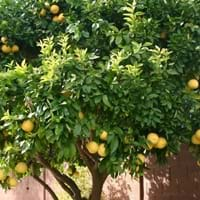Life Span
Annual
Perennial
Origin
South America, Micronesia, New Zealand
South Asia, Southeast Asia
Types
Not Available
Not Available
Habitat
coastal environs, Grassland, Roadsides, Waste areas, waterways
Mediterranean region
USDA Hardiness Zone
7-11
8-10
AHS Heat Zone
11 - 7
Not Available
Sunset Zone
H1, 3a, 3b, 4, 5, 6, 7, 8, 9, 10, 11, 12, 13, 14, 15, 16, 17, 18, 19, 20, 21, 22, 23, 24
Not Available
Habit
Clump-Forming
Spreading
Flower Color
Purple
White
Flower Color Modifier
Bicolor
Bicolor
Fruit Color
Not Available
Green, Lemon yellow, Yellow
Leaf Color in Spring
Green, Light Green, Dark Green
Green
Leaf Color in Summer
Light Green
Green
Leaf Color in Fall
Green, Light Green, Dark Green
Dark Green
Leaf Color in Winter
Dark Green, Tan
Dark Green
Leaf Shape
Grass like
Ovate
Plant Season
Spring, Summer, Fall, Winter
All year
Sunlight
Full Sun
Full Sun
The pH of Soil
Acidic, Neutral
Acidic
Soil Drainage
Well drained
Well drained
Bloom Time
Summer, Fall
Spring, Summer
Tolerances
Drought, Salt
Full Sun
Where to Plant?
Ground
Container, Ground
How to Plant?
Seedlings
Divison, Seedlings
Plant Maintenance
Medium
High
Watering Requirements
Average Water Needs
Reduce watering once fruit are growing, Water daily during growing season
In Summer
Lots of watering
Lots of watering
In Spring
Moderate
Moderate
In Winter
Average Water
Average Water
Soil pH
Acidic, Neutral
Acidic
Soil Drainage Capacity
Well drained
Well drained
Sun Exposure
Full Sun
Full Sun
Pruning
Remove damaged leaves, Remove dead branches, Remove dead leaves
Prune to control growth, Remove dead branches
Fertilizers
All-Purpose Liquid Fertilizer
Fertilize in early to mid-summer, for fruiting plants, use high phosphorous content fertilizer
Pests and Diseases
Red blotch
Aphids, Citrus foot rot, Citrus gummosis, Citrus leaf miner, Red blotch
Plant Tolerance
Drought
Full Sun
Flower Petal Number
Single
Double, Semi-Double
Foliage Texture
Fine
Coarse
Foliage Sheen
Matte
Glossy
Attracts
Not Available
Ants, Birds
Allergy
Itchiness
Anaphylaxis, Cough, Nausea, Rhinitis, Stomach pain, Swelling, Urticaria, Vomiting, wheezing
Aesthetic Uses
Showy Purposes
Farmland, Showy Purposes
Beauty Benefits
Not Available
Acne, Good for skin, Good for the Scalp, Improve skin tone, Moisturizing, Strong, beautiful hair
Edible Uses
Sometimes
Yes
Environmental Uses
Air purification
Food for animals, Very little waste
Medicinal Uses
Not Available
anti-cancer, constipation, Digestive, Gastrointestinal disorders, Gout, Immunity, Jaundice, Respiratory Disorders, Rheumatoid arthritis, scurvy, Ulcers, Urinary problems, Weight loss
Part of Plant Used
Flowers, Leaves
Fruits
Other Uses
Animal Feed, Used as Ornamental plant
Cosmetics, Used as a flavouring in food, Used As Food, Used for its medicinal properties
Used As Indoor Plant
No
No
Used As Outdoor Plant
Yes
Yes
Garden Design
Cutflower, Dried Flower/Everlasting, Feature Plant, Foundation, Groundcover, Mixed Border, Screening / Wind Break
Edible, Fruit Tree, Tropical
Botanical Name
CORTADERIA jubata
Citrus limetta
Common Name
Purple Pampas Grass
sweet lime, sweet lemon, sweet limetta
In Hindi
Purple pampas grass
मौसम्बी
In German
Lila Pampasgras
süße Limone
In French
Pourpre herbe de pampa
Citrus limetta
In Spanish
hierba púrpura pampas
limetta dulce, limón dulce mediterráneo, limón dulce y lima dulce
In Greek
Μωβ γρασίδι παμπάς
γλυκό ασβέστη
In Portuguese
grama roxa pampas
doce de limão
In Polish
Purpurowy trawa pampasów
słodkie limonki
In Latin
Purpura Pampas herba
dulcis ad cinerem
Phylum
Magnoliophyta
Magnoliophyta
Class
Liliopsida
Magnoliopsida
Clade
Angiosperms, Commelinids, Monocots
Not Available
Tribe
Not Available
Citreae
Subfamily
Not Available
Citroideae
Number of Species
Not Available
Season and Care of Purple Pampas Grass and Sweet Lime
Season and care of Purple Pampas Grass and Sweet Lime is important to know. While considering everything about Purple Pampas Grass and Sweet Lime Care, growing season is an essential factor. Purple Pampas Grass season is Spring, Summer, Fall and Winter and Sweet Lime season is Spring, Summer, Fall and Winter. The type of soil for Purple Pampas Grass is Loam and for Sweet Lime is Rich while the PH of soil for Purple Pampas Grass is Acidic, Neutral and for Sweet Lime is Acidic.
Purple Pampas Grass and Sweet Lime Physical Information
Purple Pampas Grass and Sweet Lime physical information is very important for comparison. Purple Pampas Grass height is 90.00 cm and width 120.00 cm whereas Sweet Lime height is 800.00 cm and width 600.00 cm. The color specification of Purple Pampas Grass and Sweet Lime are as follows:
Purple Pampas Grass flower color: Purple
Purple Pampas Grass leaf color: Green, Light Green and Dark Green
Sweet Lime flower color: White
- Sweet Lime leaf color: Green
Care of Purple Pampas Grass and Sweet Lime
Care of Purple Pampas Grass and Sweet Lime include pruning, fertilizers, watering etc. Purple Pampas Grass pruning is done Remove damaged leaves, Remove dead branches and Remove dead leaves and Sweet Lime pruning is done Prune to control growth and Remove dead branches. In summer Purple Pampas Grass needs Lots of watering and in winter, it needs Average Water. Whereas, in summer Sweet Lime needs Lots of watering and in winter, it needs Average Water.





